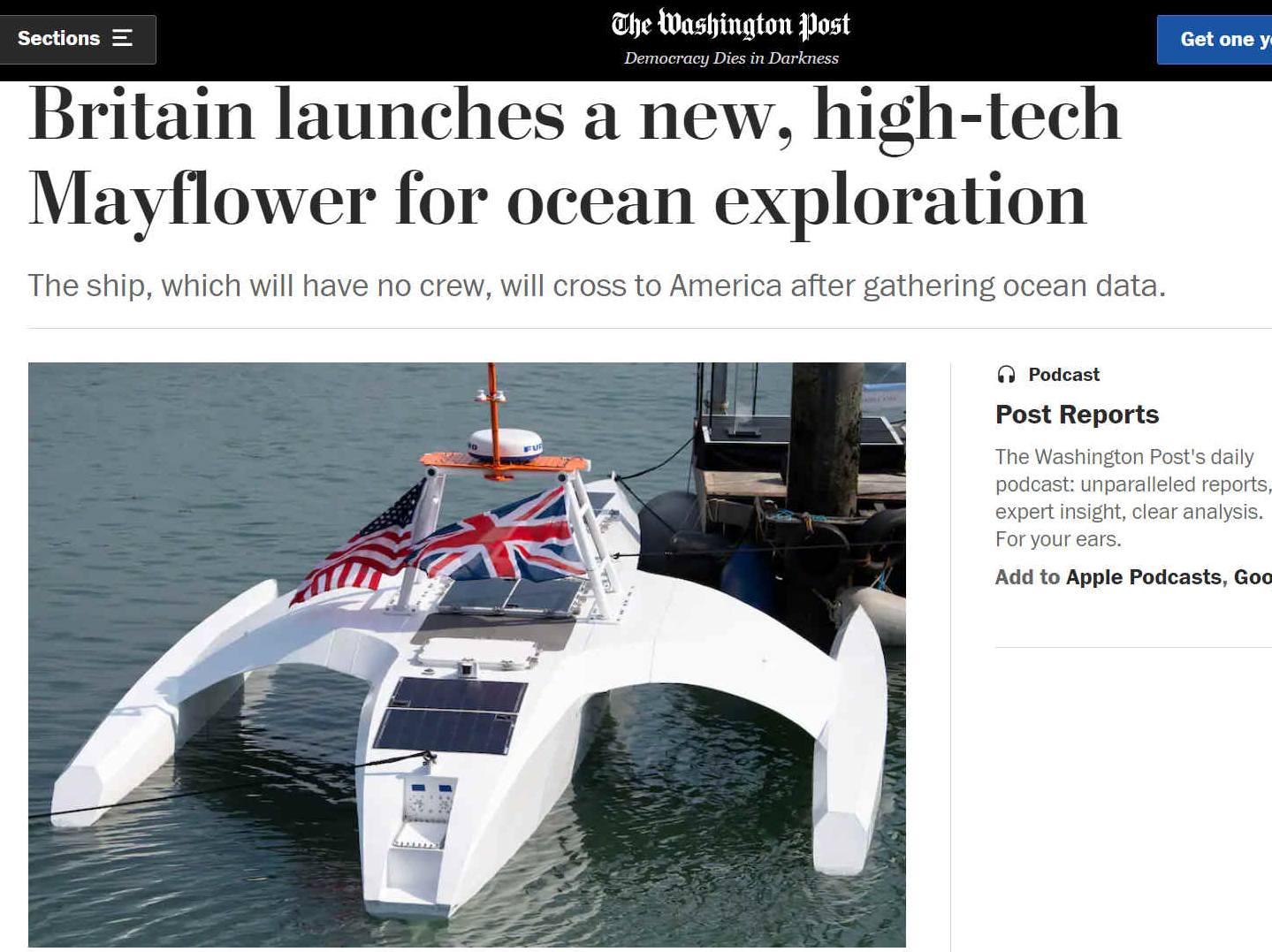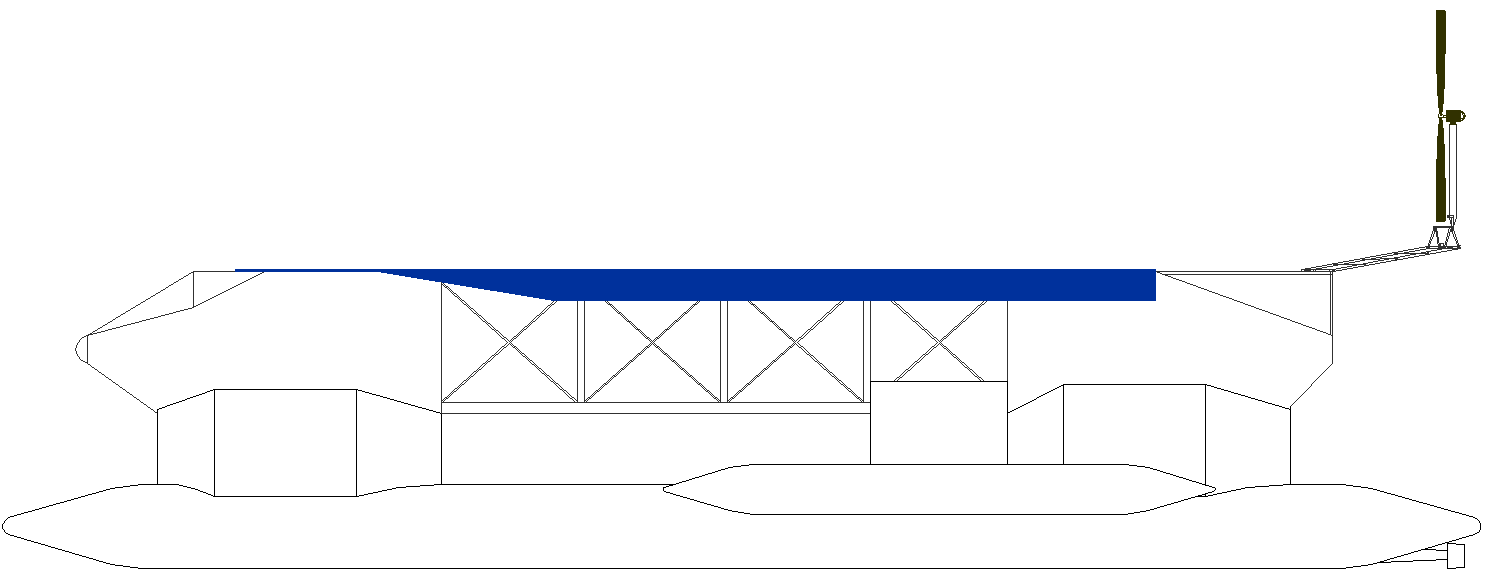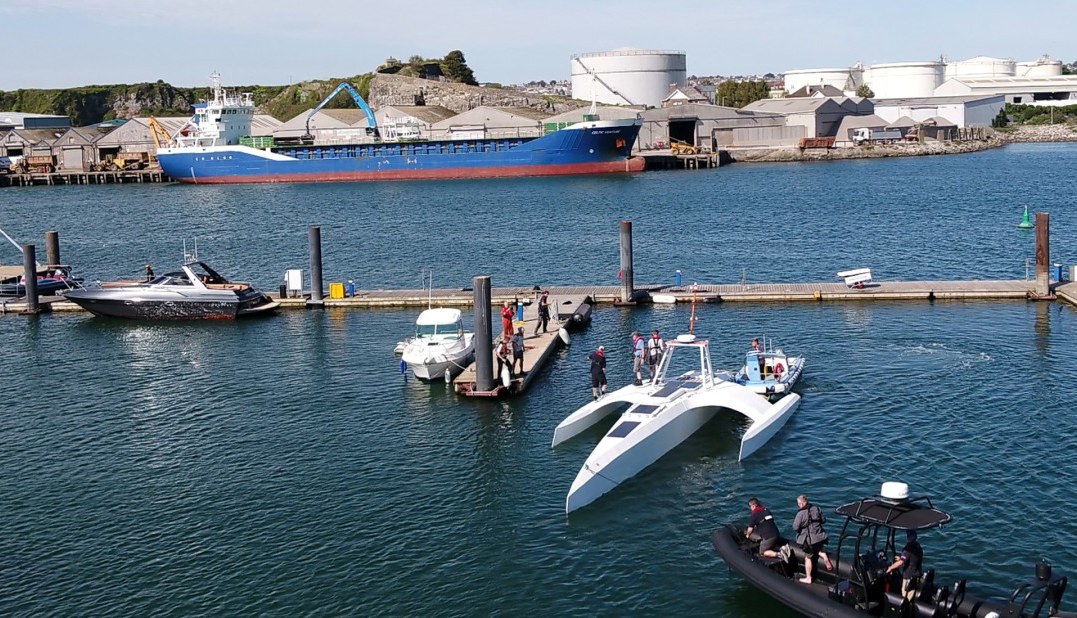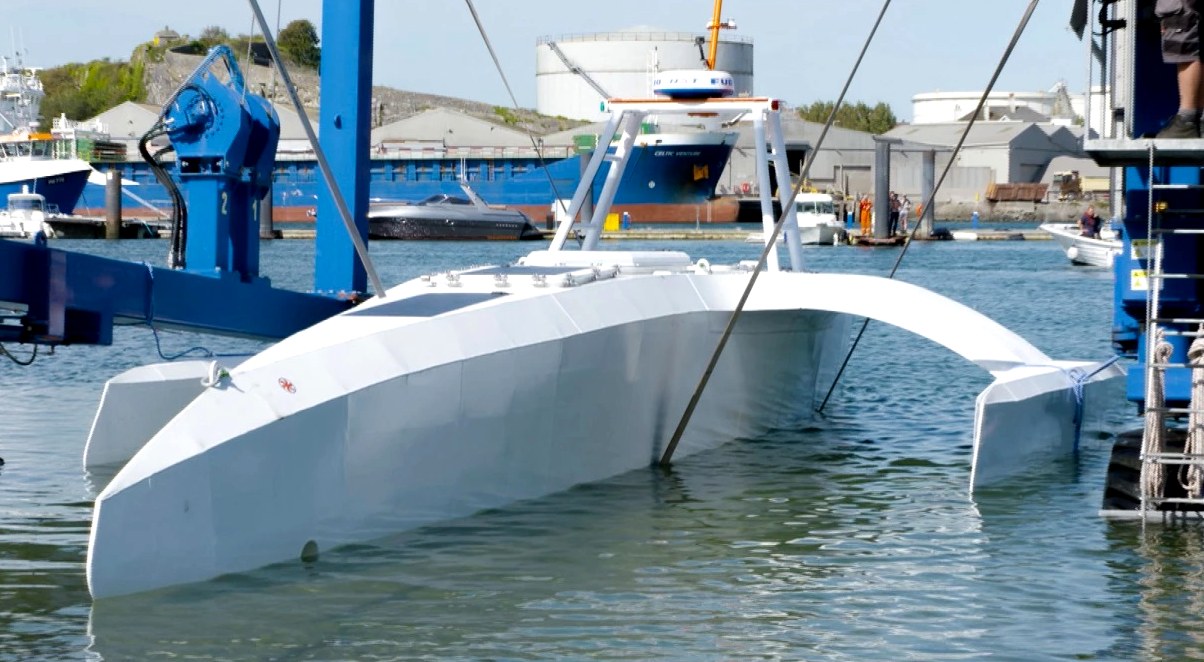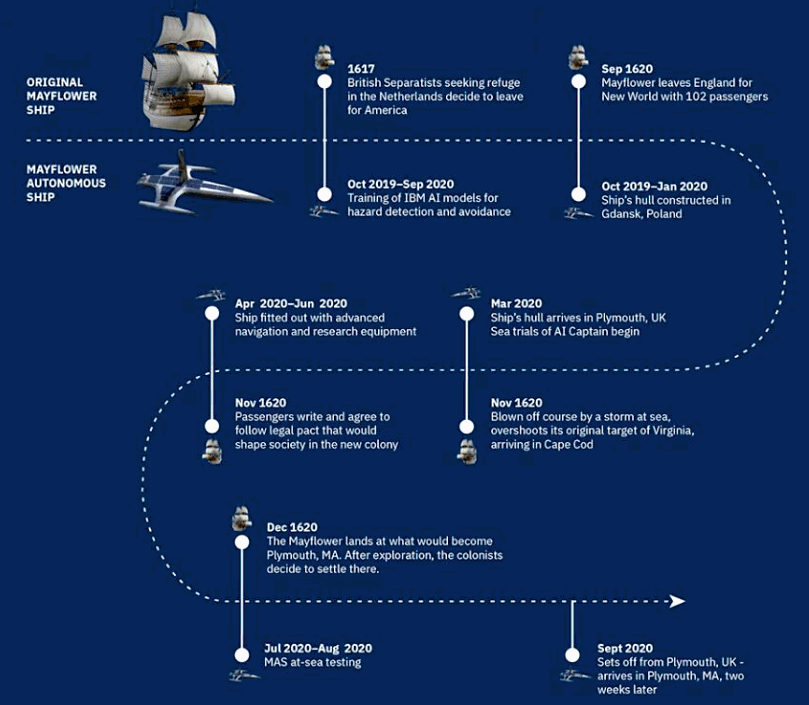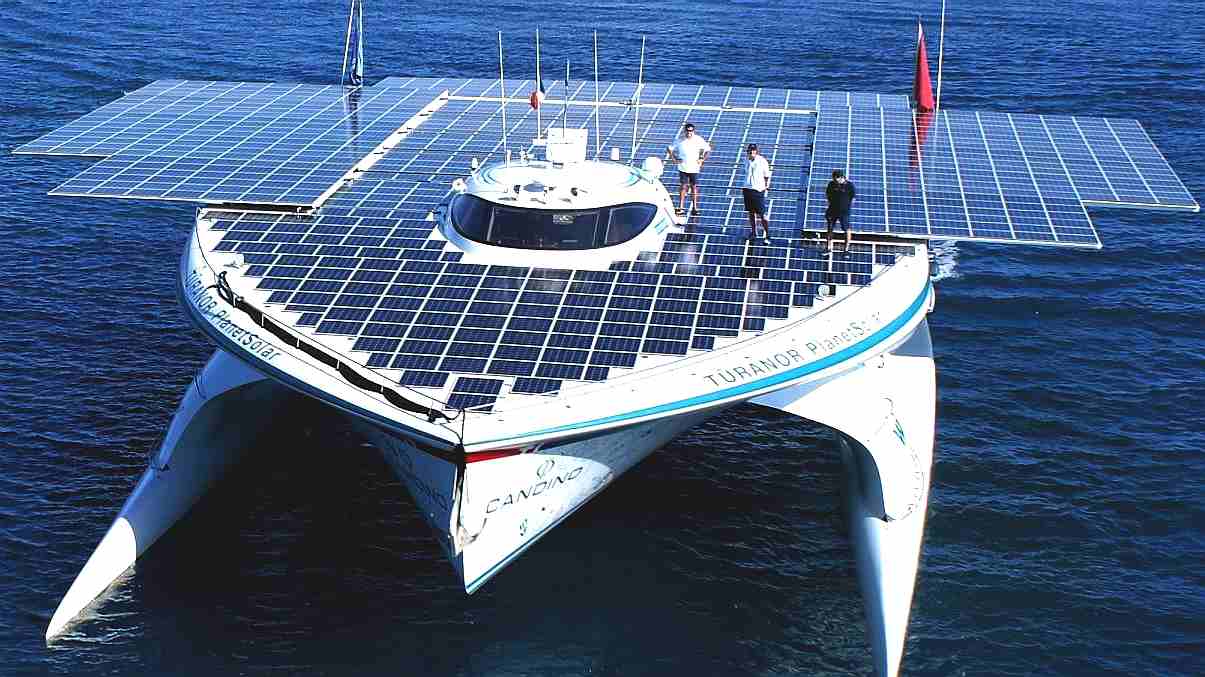|
IBM - AI CAPTAIN
Please use our A-Z INDEX to navigate this site or return HOME
|
|
IBM MAYFLOWER - According to their websites, this trimaran navigates using an AI Captain, where the boat is unmanned, but it appears that docking (tying up) is accomplished manually - looking at this picture. Whereas for more complete autonomy, docking should perhaps also be an autonomous function. We think this will become an essential feature in ports of the future, if solar ships are to be able to compete with bunker fuelled leviathans.
The Mayflower is a relatively low budget autonomous trimaran controlled by an AI Captain, considering the hi specification of instrumentation onboard. The AI Captain is not too dissimilar to 'Captain Nemo' and 'Hal' on the Elizabeth Swann.
The Promare team are proposing crossing the Atlantic autonomously in 2021, to set the first record, hence the name Mayflower, as in the start of something big. After the Atlantic, the team have said they want to attempt a circumnavigation. Presumably then, they will have to stop for diesel fuel at various waypoints along the way - that will include docking autonomously - otherwise the journeys will not have been unmanned. They will have been manned at cast off, and manned at the destination, when tying up in harbours or ports - hence semi-autonomous. At least that is our thinking, at the present time.
An autonomous (unmanned) circumnavigation of the globe was first proposed in 2012/13 by Bluebird Marine Systems Ltd, but because the vessel proposed would be able to travel continuously without the need to stop for fuel, such event would have been truly autonomous.
A developed form of IBM's AI Captain may make such a proposal a reality for other teams with similar ambition, such as the Cleaner Ocean Foundation, where they took up the torch when Bluebird Marine ceased trading.
The Elizabeth Swann uses an autonomous navigation system called Captain Nemo with computer AI software called "Hal" after Stanley Kubrick's Space Odyssey 2001, inspired by Arthur C Clarke's short stories.
AUTONOMOUS CONCEPT: The Swann is a 53 meter yacht (in effect), making it the largest solar powered, energy autonomous vessel in the world. The onboard AI is called Hal, and the autopilot system is called Captain Nemo, after Jules Verne's fabulous adventure, beautifully adapted for the screen in Disney's 20,000 Leagues Under the Sea.
Andy Stanford-Clark, chief technology officer for IBM U.K. and
Ireland, is quoted by CNBC, that the Mayflower relies on an onboard AI Captain which uses computer vision, automation software and Watson technology —
IBM’s most notable AI platform. On the Mayflower, their AI Captain does not control every aspect of the vessel, but the program does play a significant role in the ship’s operations. Along the way, its AI captain will have to make complex decisions in response to wind, waves, vessels and unknown surprises.
FLEETMON
14-9-2020
- Ever since tech giant IBM joined hands with ProMare and the Finnish Wärtsilä to develop one of the world’s full autonomous ships, the internet has been abuzz with their activities.
DIESEL POWERED - The next step for this IC powered concept, is to become zero emission. We are sure that was the intention, according to the artwork that was published during the initial crowd funding campaign. The final version bears little resemblance, but it is still a major achievement, in getting the boat in the water in 4 years since the 2016 crowdfunder.
THE
FUTURE OF AUTONOMOUS SHIPPING
Brett Phaneuf, managing director of M Subs, is quoted as saying:
LINKS & CONTACTS
https://www.insidermedia.com/news/south-west/autonomous-ship-planned-for-mayflower-celebrations https://www.businesstelegraph.co.uk/ai-ai-captain-how-the-mayflower-autonomous-ship-will-cross-the-atlantic/ https://www.robothusiast.com/mayflower-fully-autonomous-ship-with-ai-captain/ https://venturebeat.com/2020/03/04/ai-ai-captain-how-the-mayflower-autonomous-ship-will-cross-the-atlantic/ https://www.abc.net.au/radionational/programs/sundayextra/autonomous-shipping/12900456 https://www.fleetmon.com/maritime-news/2020/30917/worlds-first-fully-autonomous-ship-all-set-sea-tri/ https://www.punto-informatico.it/mayflower-autonomous-ship/ https://www.ship-technology.com/features/ai-in-shipping/ https://mayflowereventnews.com/mayflower-autonomous-ship-project/ https://www.mayflower400uk.org/news/2020/september/groundbreaking-mayflower-autonomous-ship-revealed-to-the-world/
The current energy autonomous (solar powered) transatlantic record holder is the Tûranor PlanetSolar, seen below. Note, this boat was manned, not crewless. Nevertheless, with an autopilot and collision avoidance sensors, in our view, she would easily make it across the Atlantic Ocean - from one waypoint to another in unmanned mode. But in 2012, the technology was not so freely available. Today, several companies offer full COLREGS compliant navigation systems.
|
|
|
Please use our A-Z INDEX to navigate this site or return HOME
This website is Copyright © 2020 Jameson Hunter Ltd
|
